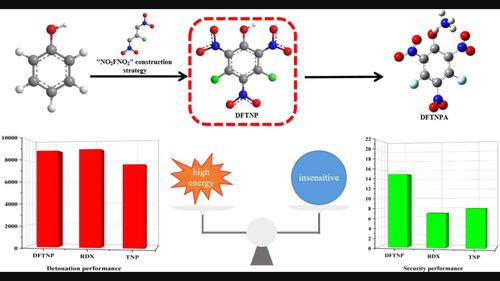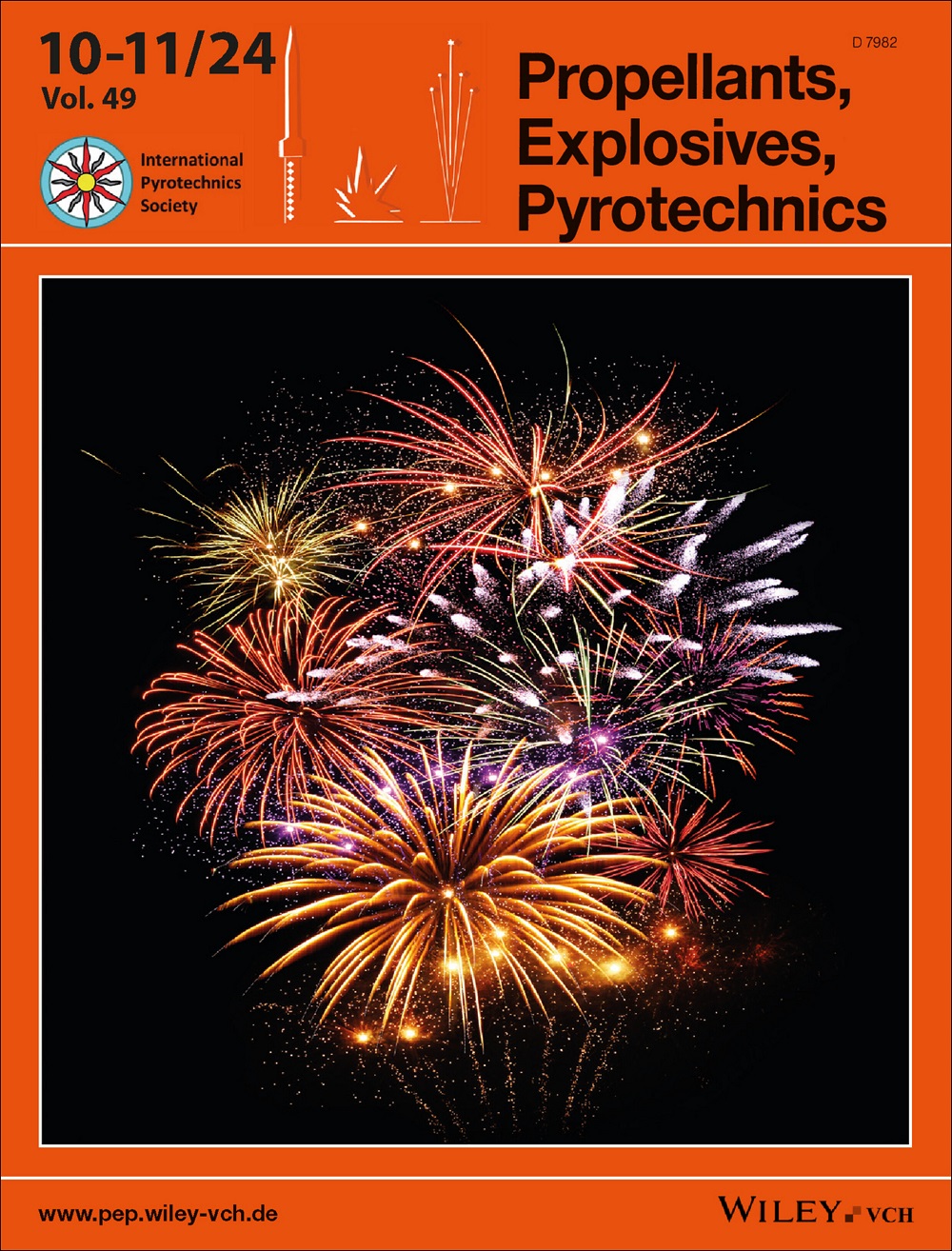3,5-difluoro-2,4,6-trinitrophenol: A high-energy compound born under the “NO2FNO2” construction strategy
IF 2
4区 工程技术
Q3 CHEMISTRY, APPLIED
引用次数: 0
Abstract
3,5-Difluoro-2,4,6-trinitrophenol (DFTNP) was designed as energetic compounds, based on the “NO2FNO2” strategy. Its structure was fully characterized by IR, NMR, elemental analysis, and single-crystal X-ray diffraction. Physico-chemical characterization of this compound was investigated based on several theoretical techniques. The result indicated that DFTNP is less sensitive to external stimuli, with a thermal sensitivity of 213 °C, impact and friction sensitivity of 15 J and 240 N. It also shows particularly high density (ρ=1.949 g cm−3) and detonation performance (D=8440 m s−1, P=32.60 GPa), which far exceeds the performance of picric acid. Its crystal packing and the intermolecular interaction of DFTNP play an important role inreducing localized heating. In addition, this compound also has great potential for building ionic salts, and its ammonium salt performance exhibits better performance. Good performance not only highlight this compound as a suitable replacement for picric acid, but also suggests that “NO2FNO2” may be a good choice in designing energetic compounds.

3,5-二氟-2,4,6-三硝基苯酚:在 "NO2FNO2 "构建策略下诞生的高能化合物
基于 "NO2FNO2 "策略,3,5-二氟-2,4,6-三硝基苯酚(DFTNP)被设计为高能化合物。通过红外光谱、核磁共振、元素分析和单晶 X 射线衍射对其结构进行了全面鉴定。基于多种理论技术对该化合物的物理化学特征进行了研究。结果表明,DFTNP 对外界刺激的敏感性较低,热敏感性为 213 °C,冲击和摩擦敏感性分别为 15 J 和 240 N。它还表现出特别高的密度(ρ=1.949 g cm-3)和引爆性能(D=8440 m s-1,P=32.60 GPa),远远超过了苦味酸的性能。其晶体结构和 DFTNP 分子间的相互作用在减少局部加热方面发挥了重要作用。此外,该化合物还具有构建离子盐的巨大潜力,其铵盐性能表现更佳。良好的性能不仅凸显了该化合物是苦味酸的合适替代品,也表明 "NO2FNO2 "可能是设计高能化合物的一个不错选择。
本文章由计算机程序翻译,如有差异,请以英文原文为准。
求助全文
约1分钟内获得全文
求助全文
来源期刊

Propellants, Explosives, Pyrotechnics
工程技术-工程:化工
CiteScore
4.20
自引率
16.70%
发文量
235
审稿时长
2.7 months
期刊介绍:
Propellants, Explosives, Pyrotechnics (PEP) is an international, peer-reviewed journal containing Full Papers, Short Communications, critical Reviews, as well as details of forthcoming meetings and book reviews concerned with the research, development and production in relation to propellants, explosives, and pyrotechnics for all applications. Being the official journal of the International Pyrotechnics Society, PEP is a vital medium and the state-of-the-art forum for the exchange of science and technology in energetic materials. PEP is published 12 times a year.
PEP is devoted to advancing the science, technology and engineering elements in the storage and manipulation of chemical energy, specifically in propellants, explosives and pyrotechnics. Articles should provide scientific context, articulate impact, and be generally applicable to the energetic materials and wider scientific community. PEP is not a defense journal and does not feature the weaponization of materials and related systems or include information that would aid in the development or utilization of improvised explosive systems, e.g., synthesis routes to terrorist explosives.
文献相关原料
公司名称
产品信息
阿拉丁
3,5-Difluorophenol
 求助内容:
求助内容: 应助结果提醒方式:
应助结果提醒方式:


